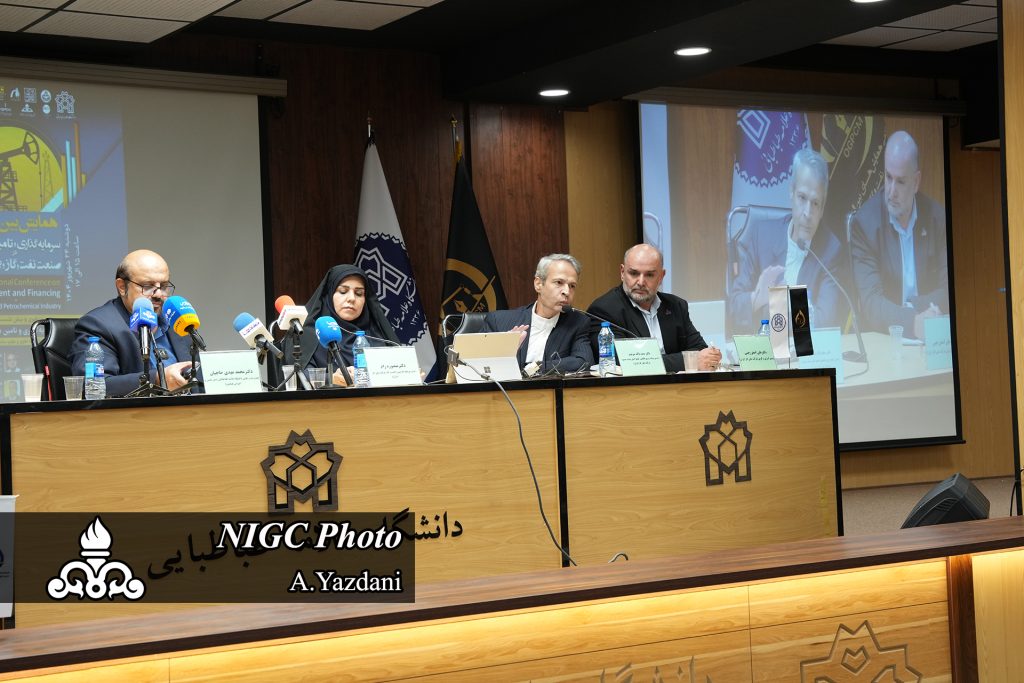GASBONYAN / To meet the $42 billion investment needed in the upstream sector and beyond, a focus on carbon reduction projects will place Iran on a new path toward development and attracting both domestic and foreign investors. These topics were discussed by managers of the National Iranian Gas Company during the pre-session of the International Conference on Investment and Financing in the Oil, Gas, and Petrochemical Industry at Allameh Tabataba’i University.
Introduction of $8 Billion Projects to Attract Investors
Mansoureh Ram, Director of Investment and Business at the National Iranian Gas Company, introduced 15 projects worth more than $8 billion, stating that these initiatives could open new horizons for the development of Iran’s gas industry.
She added that the projects are designed to enhance sustainable development, improve efficiency, and expand the capacity of refining, transmission, and storage. The expected rate of return on these projects exceeds 30 percent—significantly higher than the general project return rates, which usually range between 18 to 20 percent.
Ram also highlighted the guarantee of product supply for investors as a key feature of these projects and emphasized that synergy between the public and private sectors can play a vital role in achieving the goals of Iran’s Seventh Development Plan.

$42 Billion Needed for Gas Industry Infrastructure Development
Abdollah Younes Ara, Director of Investment at the National Iranian Gas Company, also stated that in order to achieve the goals of the Seventh Development Plan and meet the rising domestic demand, the gas industry requires approximately $42 billion in investments across upstream, refining, transmission, distribution, and storage sectors.
According to him, last year an average of 765 million cubic meters of gas per day was delivered to consumers. However, it is projected that by the end of the Seventh Development Plan, this figure will reach 1.15 billion cubic meters per day. He further noted that during the same period, Iran’s daily gas production capacity is expected to rise to 1.34 billion cubic meters—representing a 30 percent increase in production.
Ara underlined that investment in the gas industry is one of the most profitable economic options for the country due to its high added value and its crucial role in energy-intensive industries such as petrochemicals, steel, and cement.
Reducing Carbon Emissions in the Gas Industry: An Opportunity for Economic Growth
Ali-Asghar Rajabi, Director of Energy and Carbon at the National Iranian Gas Company, emphasized the importance of reducing carbon emissions and adopting green technologies as two key factors in attracting investment.
He noted that climate change and environmental obligations have become global priorities and stressed that Iran, as one of the world’s largest producers of natural gas, must focus on innovative technologies such as carbon storage and recycling.
Rajabi added that reducing carbon emissions not only improves environmental performance but also creates a competitive advantage in attracting investors. According to him, the company’s programs in this area include engaging with international carbon markets and developing advanced technologies, which could strengthen Iran’s position in the global energy market.
It should be noted that the International Conference on Investment and Financing in the Oil, Gas, and Petrochemical Industry will be held on October 27–28 (5–6 Aban) this year at Allameh Tabataba’i University. The event aims to bridge the gap between academia and industry, provide scientific and practical solutions for financing energy projects, and enhance Iran’s role in the global gas market.






